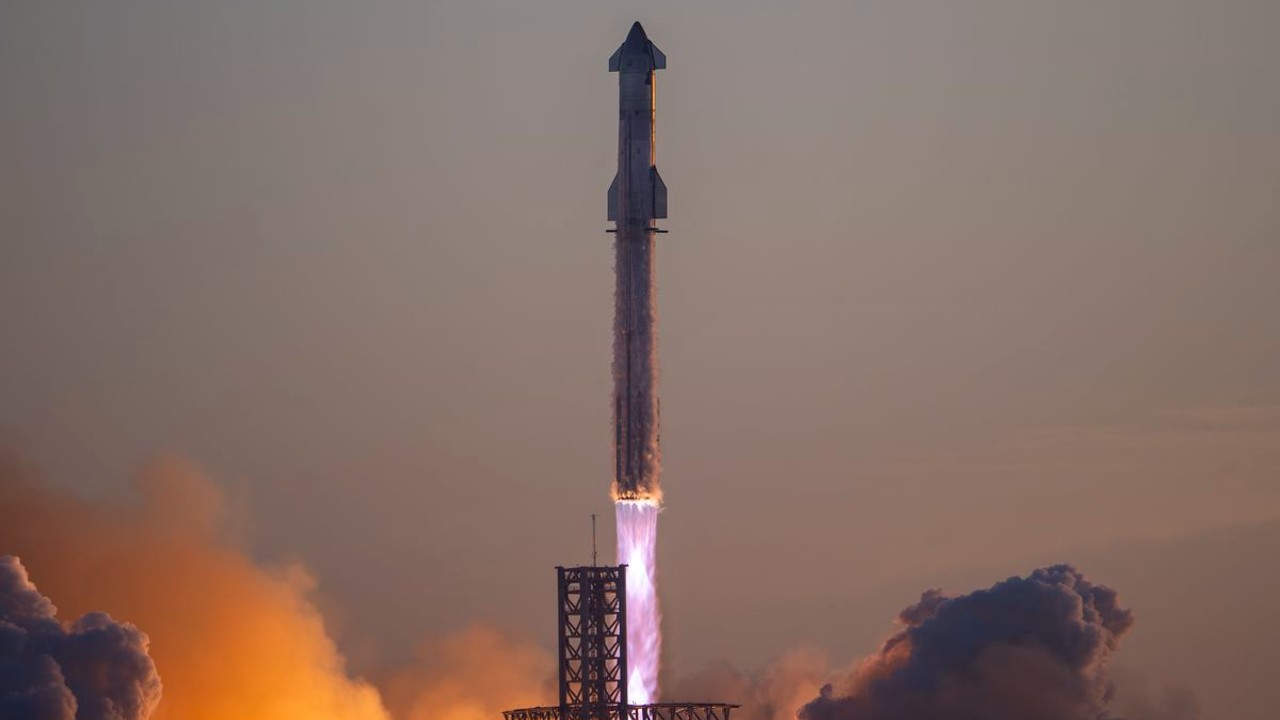US military eyes SpaceX Starship for 'sensitive and potentially dangerous missions': report
In this proposed arrangement, the Pentagon would fly Starship as a government-controlled vehicle.

The U.S. military is considering commandeering SpaceX's reusable Starship rocket for dangerous or sensitive missions.
The U.S. Department of Defense (DOD) has reached out to SpaceX to inquire about using Starship on its own, flying the massive rocket as a "government-owned, government-operated" asset on "sensitive and potentially dangerous missions," according to a recent report in Aviation Week.
Currently, the DOD contracts SpaceX as a launch services provider; in this new proposed arrangement the Pentagon would actually take control of the vehicle on its own.
Related: Space is now 'most essential' domain for US military, Pentagon says
Aviation Week cites comments made on Tuesday (Jan. 30) by Gary Henry, a Senior Advisor for National Security Space Solutions at SpaceX, during the 2024 Space Mobility Conference held in Orlando, Florida.
"We have had conversations … and it really came down to specific missions, where it's a very specific and sometimes elevated risk or maybe a dangerous use case for the DOD where they’re asking themselves: 'Do we need to own it as a particular asset … SpaceX, can you accommodate that?'" Henry said at the conference.
"We've been exploring all kinds of options to kind of deal with those questions," Henry added.
Breaking space news, the latest updates on rocket launches, skywatching events and more!
The DOD has been considering using Starship for years. As early as 2020, U.S. Transportation Command (USTRANSCOM) was discussing using the giant reusable rocket — which is not yet operational — for transporting cargo or even personnel rapidly around the world.
"Think about moving the equivalent of a C-17 payload anywhere on the globe in less than an hour. Think about that speed associated with the movement of transportation of cargo and people," former commander of USTRANSCOM Gen. Stephen Lyons said in Oct. 2020. "There is a lot of potential here, and I'm really excited about the team that's working with SpaceX on an opportunity, even perhaps, as early as '21, to be conducting a proof of principle."
Col. Eric Felt, director of space architecture for the Office of the Secretary of the Air Force for Space Acquisition and Integration, added that "there might be some use cases where there needs to be a government-owned, government-operated [vehicle], and that transfer can happen on the fly," Aviation Week reports.
SpaceX founder and CEO Elon Musk has even hinted at using Starship to send 1,000 human passengers on point-to-point flights around the world at hypersonic speeds held in place by amusement-park-like restraints. "Would feel similar to Space Mountain in a lot of ways, but you'd exit on another continent," Musk wrote on X in 2019.
Aside from potential U.S. military applications and its traditional usage as a commercial launch vehicle, Starship is being tapped for NASA's Artemis program. The agency plans to use Starship as a moon lander to ferry human crews to and from the lunar surface, beginning with the Artemis 3 mission no earlier than 2026.
A lot of development and testing has to go right before that can happen, though. SpaceX will first have to conduct a successful demonstration in which Starship will be used as an orbital refueling platform to top off a human lander after it uses most of its fuel after it leaves Earth and heads to the moon.
Starship is SpaceX's next-generation launch vehicle that the company hopes will help humanity build settlements on the moon and Mars. The massive rocket has flown on two test flights to date; one in April 2023 and again in November 2023. A third test flight could come as soon as February 2024, pending regulatory approval from the U.S. government.

Brett is curious about emerging aerospace technologies, alternative launch concepts, military space developments and uncrewed aircraft systems. Brett's work has appeared on Scientific American, The War Zone, Popular Science, the History Channel, Science Discovery and more. Brett has degrees from Clemson University and the University of North Carolina at Charlotte. In his free time, Brett enjoys skywatching throughout the dark skies of the Appalachian mountains.

